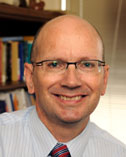
|
|
Director's Letter The COVID-19 pandemic has raised attention to the crisis of burnout in health care, especially to concerns that it is fueling early retirements and turnover. In reality, burnout in health care predated the pandemic, and is only loosely related to working long hours. Feelings of exhaustion and fatigue were common among clinicians during the pandemic and are part of burnout, but burnout also requires feelings of depersonalization and reduced efficacy. The early months of the pandemic demonstrated that clinicians can work incredibly hard and withstand trauma when they feel they are making a difference and are supported in their work. Things worsened as the COVID-19 pandemic became politicized. Watching patients oppose public health measures, refuse vaccination, attack health care workers and succumb to preventable illnesses accelerated burnout among front-line clinicians. What were the pre-pandemic contributors to burnout? Outside of VA, byzantine insurance processes, dysfunctional electronic health records (EHR) and reduced autonomy all contributed to a sense of disenchantment among clinicians. VA is largely spared the first two problems – clinicians like our current home-grown EHR and we don’t need to deal with third-party payers – but other factors can promote frustration. Taking care of complicated patients in the face of inadequate staffing, top-down decision-making, and over-emphasis on performance metrics can make it hard to feel one is always delivering high-quality, patient-centered care. I was struck by two facts at a recent presentation on burnout in primary care at the Society for General Internal Medicine Annual Meeting: 1) prevalence varied widely across VA medical centers – i.e., some sites have figured out how to reduce burnout; and 2) high levels of employee engagement were protective against burnout. While the latter observation may seem tautological – engagement is the opposite of burnout – it reminds us that improving engagement rather than reducing work hours is the best cure for burnout. Improving servant leadership, making work meaningful, reducing unproductive work, and equipping our employees to succeed will make much more of a difference than a 30-minute meditation break. HSR&D is proud to be a part of the REBOOT initiative described in this issue and to have contributed research to help shape the initiative. We look forward to helping to evaluate its impact going forward. David Atkins, MD, MPH, Director, HSR&D |
|
❮ Previous